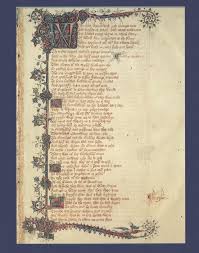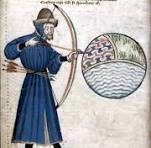
- Múinteoir: Andre Loiselle
- Múinteoir: Matte Robinson

 The Fourteenth Century has been described as calamitous by some, and extravagant by others, but none can deny its fascination or fail to note that its importance lies not only in its social, political, and religious upheaval, but in its artistic innovation. The latter half of the century in England is particularly marked by the works of a group of remarkable poets, mostly working separately, who negotiated the multi-lingual language communities of their day and welded those languages (English, Anglo-Norman, French, and Latin) into a single vehicle for the expression of all that is best and worst in humankind. We will read many of Chaucer's Canterbury Tales this term; in the second term we will explore other important works, specifically Sir Gawain and the Green Knight and Pearl. We will also read some lyrics, some plays and maybe some of John Gower's great Confessio Amantis. Gower was Chaucer's dear friend and is my favourite late medieval poet. We will thus encounter the major dialects of late medieval England
The Fourteenth Century has been described as calamitous by some, and extravagant by others, but none can deny its fascination or fail to note that its importance lies not only in its social, political, and religious upheaval, but in its artistic innovation. The latter half of the century in England is particularly marked by the works of a group of remarkable poets, mostly working separately, who negotiated the multi-lingual language communities of their day and welded those languages (English, Anglo-Norman, French, and Latin) into a single vehicle for the expression of all that is best and worst in humankind. We will read many of Chaucer's Canterbury Tales this term; in the second term we will explore other important works, specifically Sir Gawain and the Green Knight and Pearl. We will also read some lyrics, some plays and maybe some of John Gower's great Confessio Amantis. Gower was Chaucer's dear friend and is my favourite late medieval poet. We will thus encounter the major dialects of late medieval England
This course has three major elements: language, literature, and culture. All three, however, rely on the historical, social, political and theological events of the late Middle Ages, not to mention the medical and scientific upheavals. We will therefore be reading and working with sources of various kinds, in the original language as often as possible. Please note: The linguistic focus of this course is on the sound, not the structure of Middle English. We are reading in the original language as often as possible and we will use that language aloud, too.
- Múinteoir: Andrea Schutz


